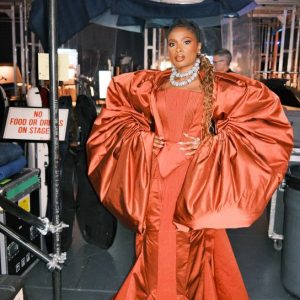Reinventing Prince: Name Changes, Artistic Identity, and the Power of the Symbol
In a world where artists are often pigeonholed by their image and branding, Prince Rogers Nelson—known simply as Prince—took the concept of identity to a whole new level. His 1993 decision to change his name to an unpronounceable symbol was not merely a quirky artistic choice; it was a bold statement about ownership, creativity, and the very essence of an artist’s identity. As fans and music lovers continue to dissect the legacies of legendary figures, it's clear: Prince’s iconic transformation is a touchstone for current and future creators navigating the choppy waters of artistic identity.
When an artist like Prince—who is known for his eclectic sound and flamboyant style—decides to adopt an amorphous symbol that defies easy pronunciation, you know there's depth behind the spectacle. At its core, this name change was a rebellious act against the industry that sought to control him. During the early '90s, Prince was embroiled in a very public feud with his label, Warner Bros. Frustrated by contractual constraints on his art, he sought to reclaim his identity. The symbol, a fusion of the male and female signs, encapsulated his fluidity and nonconformity while serving as a beacon for artistic autonomy.
In the drab, commercial landscape of the music industry, where artists are often reduced to marketable brands, Prince’s transformation offered a radical counter-narrative. Imagine walking into a record store and being confronted with a blank space where an artist's name should be! It was absolutely revolutionary and added an element of intrigue that transcended traditional marketing; it made consumers ponder what true artistic freedom could look like. As music industry insiders and fans alike began to embrace the symbol, it morphed into a powerful icon of self-expression and rebellion.
But the story doesn’t end with the adoption of that indelible symbol; it intertwines with broader themes of identity and artistic integrity. With a legacy that includes chart-topping hits ranging from "Purple Rain" to "Kiss," Prince had already solidified his place in music history. Yet his willingness to strip away his name served as an assertion of his creativity. Artistic identity, after all, isn’t just about labels; it's about the stories musicians tell and the boundaries they challenge.
To better understand the implications of Prince’s symbol, let’s take a moment to peel back the layers on its legal ramifications. When Prince transitioned to the symbol, he effectively evaded control from Warner Bros., a move that raised eyebrows across the industry. He became "The Artist Formerly Known as Prince"—not a catchy title but a powerful declaration of independence that echoed beyond the music charts. This shift didn’t just spark conversations about marketing strategies; it ignited discussions on copyright laws, creators' rights, and the essential question: how much control should artists have over their own names and, by extension, their own narratives?
His name change also paved the way for future generations of artists. Fast forward to 2023, and we see a wave of rising stars and established names experimenting with their identities, often seeking to reflect their multi-dimensional selves in ways that resonate with diverse audiences. The likes of Halsey, who has showcased different dimensions of identity through her various stages, or the enigmatic Sia, who stylizes her public persona as a veil for her art, owe a debt to those who have walked this path before them—like Prince.
Moreover, in an age of social media where artists are more accessible than ever, the concept of identity continues to evolve. Celebrities are using platforms to connect with their fans, share their personal stories, and often redefine themselves on a whim. However, just as Prince challenged the orthodoxy of the music industry in the '90s, today's artists are facing unique challenges that call for a reevaluation of their identities—often in real time. This ongoing dialogue about authenticity and artistic freedom is more crucial than ever.
Prince’s legacy reminds us that names and identities are not merely labels; they are powerful conduits for artistic expression. By choosing a symbol that defied language, he rejected the constraints placed upon him and carved a new path for creative autonomy. In doing so, he has inspired countless artists to listen to their inner voices and take charge of their narratives.
With the passing of time, Prince’s symbol remains a vivid reminder of the power of reinvention and the necessity of challenging the norms. As we move forward in an increasingly complex artistic landscape, let us take a cue from the legend himself: identity is fluid, evolving, and, above all, a personal journey. Keep embracing your artistic self, however it may manifest—because, like The Artist Once Known as Prince, it might just change the world.
In the end, the enigma of Prince’s name change served as more than just a moment in pop culture; it carved a permanent niche in the evolution of artistic identity. So, let’s celebrate the legacy of a man who turned his name into a symbol—one that continues to inspire audacity, creativity, and the eternal quest for self-expression in the ever-evolving realm of music.

